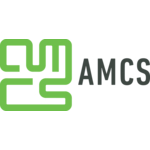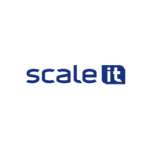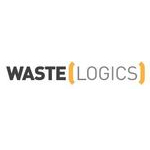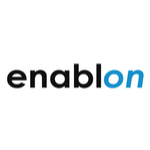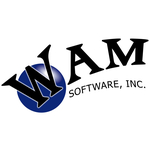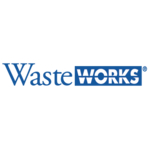List of Best Waste Management Software
Showing 10 of 35 productsAMCS is a leading software used by businesses of all sizes to streamline their operations and manage their resources efficiently. With its user-friendly interface and powerful features, AMCS helps companies increase productivity, reduce costs, and im...Read AMCS Reviews
Tookan is a software that streamlines scheduling, tracking, and delivery operations for businesses of all sizes. With its user-friendly interface features, Tookan has revolutionized the way businesses manage their on-demand services, making it the go...Read Tookan Reviews
Scaleit W8 is a software designed to simplify and enhance your business operations. With its intuitive user interface features, W8 allows you to efficiently manage your projects, team, and finances from one centralized platform. Say goodbye to tediou...Read Scaleit W8 Reviews
Box Tracker is a solution for efficient and organized tracking of your packages and deliveries. With its user-friendly interface, real-time updates, features, Box Tracker is the go-to software for keeping track of all your shipments. Say goodbye to c...Read Box Tracker Reviews
Waste Logics is a waste management software that streamlines and simplifies the waste management process for businesses of all sizes. Designed to optimize efficiency and reduce costs, Waste Logics offers an innovative solution to handling waste, maki...Read Waste Logics Reviews
Quick Consign, is a solution for all your consignment needs. Revolutionizing the consignment industry with its user-friendly interface is a features, Quick Consign is the go-to software for consignment store owners. Seamlessly manage inventory, sales...Read Quick Consign Reviews
Enablon Waste is a top-of-the-line waste management software designed to revolutionize the way companies handle their waste and sustainability efforts. Driven by innovation and efficiency, this software streamlines waste management processes and empo...Read Enablon Waste Reviews
WAM-Hauler is a solution for all your hauling needs. This revolutionary software is designed to streamline and simplify the processes of hauling and trucking companies, making their operations more efficient and cost-effective. With WAM-Hauler, you c...Read WAM-Hauler Reviews
Soft-Pak is a software that streamlines and simplifies the way businesses manage their operations. With its user-friendly interface and customizable features, Soft-Pak is designed to enhance efficiency and productivity. Say goodbye to complex process...Read Soft-Pak Reviews
WasteWORKS is a solution for waste management and resource optimization. This innovative software streamlines waste operations, improves efficiency, and maximizes cost savings for businesses of all sizes. With its user-friendly interface and powerful...Read WasteWORKS Reviews
- What Is Waste Management Software?
- Top Reasons Why Businesses Need Waste Management Software?
- What Are the Top Key Features of Waste Management Software?
- What Are the Top Benefits of Waste Management Software?
- What Are the Steps to Choose the Right Waste Management Software?
- What Are the Types of Waste Management Software for Different Industries?
- What Are the Technology Trends for Best Waste Management Software?
- What Are the Deployment Options for Waste Management Software?
What Is Waste Management Software?
Waste management software refers to a comprehensive system employed for the purpose of monitoring, storing, analyzing, and reporting data pertaining to the generation and disposal of industrial and/or hazardous waste.
The best waste management software has the potential to assist enterprises and government agencies in mitigating environmental hazards and ensuring compliance with legal obligations. garbage management software encompasses a broader range of functionalities beyond the mere monitoring of garbage generation on-site or its release into the environment.
The utilization of waste management processes can facilitate the monitoring of operational efficiency, the mitigation of operational expenses, and the identification of potential areas for enhancement.
Furthermore, this technology aids in the management of logistical operations by enabling the monitoring and tracing of waste movement from its initial point of origin to its ultimate disposal or recycling destination.
Waste management software encompasses various functionalities such as monitoring hazardous and non-hazardous waste activities, evaluating vendor performance and safety management, gathering and managing analytics and reports, ensuring automated compliance with local, state, and federal regulations.
Integrating chemicals management for facility audits, facilitating real-time input and incident tracking, providing automated notifications and alerts, enabling electronic data exchange (EDI), facilitating real-time tracking of waste production and disposal, and utilizing RFID or NFC technology for tracking purposes in onsite waste containers and bins.
The utilization of top waste management software equips enterprises with a comprehensive instrument to safeguard individuals, the general public, and the environment from any potential hazards linked to inadequate handling and administration of both hazardous and non-hazardous waste materials.
The use of automated compliance and tracking systems not only enhances safety measures but also offers significant time and cost savings for enterprises and agencies.
Top Reasons Why Businesses Need Waste Management Software?
1. Track and report waste materials produced – Top waste management software has the capacity to assist enterprises in effectively managing and monitoring the quantity of waste materials they generate.
The implementation of this process involves the automated monitoring of disposal records and the evaluation of cost efficiencies linked to optimal disposal routes.
2. Automate waste disposal – The utilization of trash management software enables organizations to streamline disposal procedures, resulting in time and energy savings, as well as adherence to municipal waste standards.
3. Maximize reuse and recycling – By establishing a collaboration with a waste management tool supplier, businesses may avail themselves of enhanced recycling programs and resources that facilitate the reduction of waste generation in a more efficient manner.
4. Streamline waste disposal operations – The best waste management software offers a user-friendly interface and the ability to customize features, hence facilitating the streamlining of waste disposal procedures. This software also aids firms in enhancing operational efficiency and minimizing expenses.
5. Reduce landfill waste – Businesses can effectively mitigate landfill waste by establishing collaborations with waste management software providers. Through these partnerships, businesses can gain valuable insights and strategies to minimize landfill trash.
Additionally, businesses can explore alternative waste management methods such as composting, garbage incineration, and recycling, thereby optimizing their waste management practices.
6. Create data reports – Top waste management software facilitates the generation of data reports that effectively monitor and document waste generation and disposal within a specified timeframe for enterprises.
7. Monitor performance – By employing software, enterprises may effectively manage and evaluate the efficiency of their waste disposal operations by means of monitoring and analyzing data from a centralized platform.
8. Generate statistics for waste-reduction initiatives – The utilization of waste management software allows firms to extend their focus beyond mere disposal tracking, hence facilitating the identification of strategies to enhance waste reduction programs.
9. Reduce risk of environmental liability – Through establishing a partnership with a waste management software supplier, businesses may effectively mitigate their environmental responsibilities and preemptively avoid the costly implications of legal disputes in the future.
10. Aid in strategic planning – By utilizing appropriate top waste management software, enterprises can enhance their ability to forecast the requirements of their waste disposal system and assess the efficacy of previous endeavors.
11. Integrate with existing systems – The integration of CX tools and waste management software with pre-existing systems can effectively enhance functionality and user-friendliness.
12. Ensure compliance with regulatory requirements – By employing appropriate waste management tool, firms may ensure compliance with both state and federal waste rules.
13. Analyze overall waste costs – The best waste management software enables businesses to effectively monitor and analyze their total waste expenditures, hence facilitating the identification of potential areas for cost reduction.
14. Improve customer service – By establishing a collaboration with a waste management system software supplier, businesses have the opportunity to improve customer experience through the provision of more transparency and enhanced performance.
15. Automate invoice collection – The implementation of automated waste materials collection in organizations offers the potential for time and energy savings, alongside the added benefit of receiving automatic invoice notifications.
What Are the Top Key Features of Waste Management Software?
1) Automated Billing: Waste management software commonly facilitates automated billing, invoicing, and payment functionalities, thereby helping users to optimize the financial operations associated with operating a waste management enterprise.
2) Efficient Scheduling: Waste management system software plays a crucial role in enhancing user productivity by facilitating the efficient scheduling of pickups and deliveries, verifying optimal routes, and closely monitoring the status of transportation activities.
3) Robust Tracking: Organizations possess the capability to proficiently strategize and monitor transportation routes, determine suitable locations for waste disposal, and evaluate the progress of fleet management to enhance understanding and operational effectiveness.
4) Accurate Reporting: The inclusion of precise reporting and analytics functionalities enables managers to do in-depth analyses of garbage hauling and inventory levels, evaluate the efficacy of recycling initiatives, and oversee compliance with legislative requirements.
5) Collection & Disposal: The best waste management software encompasses functionalities that facilitate the strategic organization, coordination, supervision, and administration of the complete waste collection procedure, along with the appropriate handling and disposal of both hazardous and non-hazardous substances.
6) Security & Compliance: Software plays a crucial role in ensuring adherence to legislative requirements and safeguarding sensitive data through the implementation of sophisticated security measures.
7) Asset Management: Asset management tools provide the real-time tracking and monitoring of various assets, including but not limited to waste collection fleets and vehicles.
8) Integration: Prominent waste software systems provide the capability to integrate with external software and services, enabling users to establish connections between their pre-existing systems and databases.
What Are the Top Benefits of Waste Management Software?
1. Streamlines waste collection process: garbage management software facilitates the efficient scheduling of garbage collection for enterprises, while assuring adherence to regulatory norms.
2. Enhances recycling: Waste management software possesses the capability to offer comprehensive analytics, enabling the assessment of the effectiveness of recycling and disposal practices. This functionality assists businesses in optimizing cost reductions throughout the waste management process.
3. Monitor environmental impact: The utilization of waste management tool enables the monitoring and quantification of waste production, assessment of adherence to regulatory standards, and provision of comprehensive performance metrics.
4. Enhances efficiency: Waste software possesses the capability to generate comprehensive information pertaining to the operations of a facility, hence facilitating prompt and certain decision-making.
5. Improves safety: The utilization of waste management system software facilitates the adherence to safety protocols by promptly alerting personnel to any potential safety hazards that may be present in the surrounding environment.
6. Reduces operational costs: The use of automated garbage collection systems offers the potential to decrease expenses related to manual labor involved in waste removal and disposal. Additionally, businesses can benefit from cost reductions resulting from the adoption of recycling practices.
7. Improved regulatory compliance: The utilization of a waste management platform enables the monitoring and administration of trash collection and disposal procedures, hence ensuring adherence to both regional and national regulatory frameworks.
8. Increased visibility: Waste management systems have the potential to offer vital insights into several aspects of business operations, encompassing the identification of materials utilized, geographical distribution, and associated operational expenditures.
What Are the Steps to Choose the Right Waste Management Software?
1. Assess Your Needs: Assess the requirements of your firm with regard to trash management. This analysis pertains to the classification and quantity of trash generated, the specific sites where garbage will be generated, and the potential hazards associated with waste management.
2. Research Software Options: A search conducted to identify waste management software vendors is expected to generate a comprehensive compilation of organizations that provide a diverse array of solutions in this domain.
Waste software is advisable to select a vendor who possesses extensive knowledge within the sector and is widely recognized for their strong reputation. It is imperative to ascertain that the software being provided aligns with the specific requirements of your firm.
3. Set a Budget: Establish a financial allocation for the procurement of waste management tool and associated services. It is vital to take into account the enduring expenses linked to the program, encompassing maintenance, upgrades, and user training.
4. Connect With a Vendor: Contact the vendor in order to initiate a discussion regarding your requirements. Could you please provide information regarding the features, compatibility, technical support, and cost associated with the software?
5. Test the Software: Requesting a trial term of the software before committing to a purchase. Waste management platforms provide you with an opportunity to assess the usability of the program and evaluate its alignment with the requirements of your organization.
6. Make Your Purchase: After conducting an assessment to ascertain the program's suitability and compatibility with the allocated budget, proceed with the acquisition and commence utilization of the software.
What Are the Types of Waste Management Software for Different Industries?
Waste management software can be divided into several types, each of which is suited for different industries.
1. Hazardous Materials Management Software: This program facilitates the management of hazardous materials inventory, monitoring of disposal records, and adherence to environmental standards by companies. This particular application finds frequent utilization within the manufacturing, chemical, and petrochemical industries.
2. Solid Waste Management Software: This software is employed for the purpose of effectively overseeing the organization, gathering, and elimination of diverse solid waste substances, including but not limited to plastic, cardboard, and paper. Recycling facilities, trash management firms, and environmental organizations utilize this resource.
3. Medical Waste Management Software: This software is utilized for the purpose of monitoring the appropriate management and disposal of medical waste, encompassing sharps, medical supplies, and bio-hazardous substances. This technology is employed by healthcare institutions and medical facilities.
4. Recycling Management Software: This program facilitates the tracking, management, and monitoring of recycling efforts within companies. This resource is employed by enterprises engaged in the management of various recyclable resources such as scrap aluminum, paper, cardboard, plastics, glass, and other similar substances.
5. Water Treatment Plant Software: This particular program is designed to monitor and oversee the various activities carried out in water treatment facilities. This tool is utilized by organizations specializing in water stain management as well as environmental agencies.
What Are the Technology Trends for Best Waste Management Software?
In recent years, there has been a prevailing inclination within the waste management sector to employ contemporary technology and cloud computing in order to enhance the cost-effectiveness and efficiency of waste management processes.
Waste software encompasses the utilization of analytics to acquire comprehensive understanding of waste management procedures, harnessing mobile technology for instantaneous data collection, employing barcoding and RFID systems for garbage sorting and tracking, and merging digital twin simulations with pre-existing waste-management infrastructure.
The utilization of artificial intelligence enables the automated identification of ideal waste management platforms for intricate challenges, such as routing and scheduling. Additionally, the implementation of predictive analytics facilitates enhanced efficiency and diminished operational expenses.
Moreover, the utilization of Big Data can be employed to acquire significant insights pertaining to patterns and trends within operational processes.
What Are the Deployment Options for Waste Management Software?
The available deployment options for waste management software are contingent upon the specific software package, but generally encompass the following areas.
1. On-Premise Deployment: In this particular deployment scenario, the program is placed on servers owned by the user and thereafter controlled by the client. Typically, the provision of additional hardware and software infrastructure is required from the customer.
2. Cloud Deployment: This particular deployment strategy entails the utilization of cloud services for software management. The options available for consideration are Software as a Service (SaaS), Platform as a Service (PaaS), and Infrastructure as a Service (IaaS).
3. Hybrid Deployment: This deployment model is a fusion of on-premise and cloud-based infrastructure, enabling enterprises to retain sensitive data within their premises while leveraging the scalability, redundancy, and cost-efficiency offered by cloud services.
In order to arrive at an optimal decision for their specific circumstances, companies must assess the cost, complexity, and security implications associated with each available alternative.
